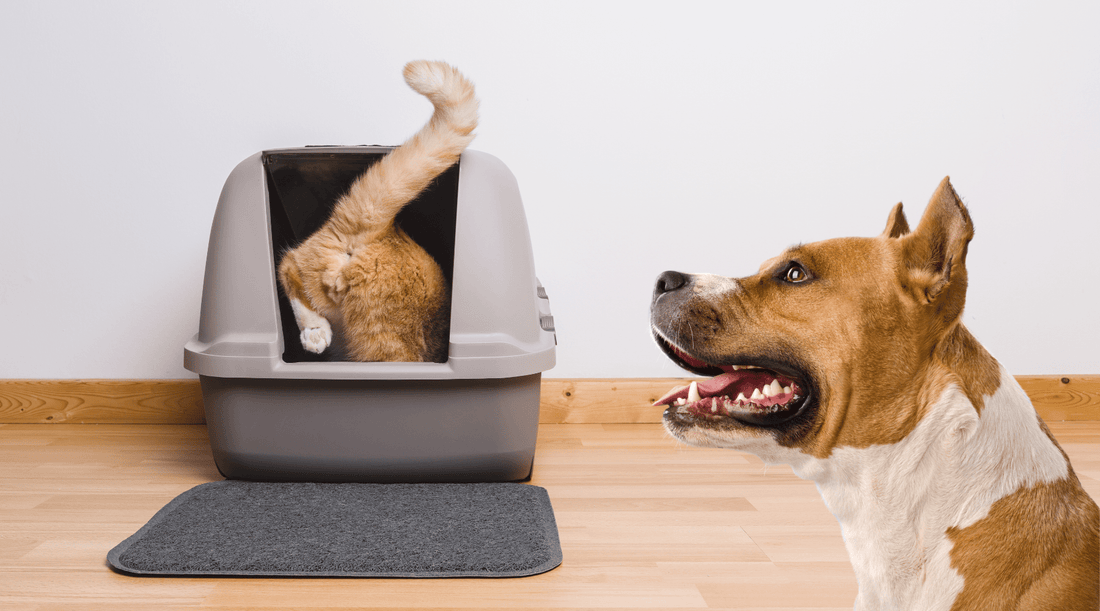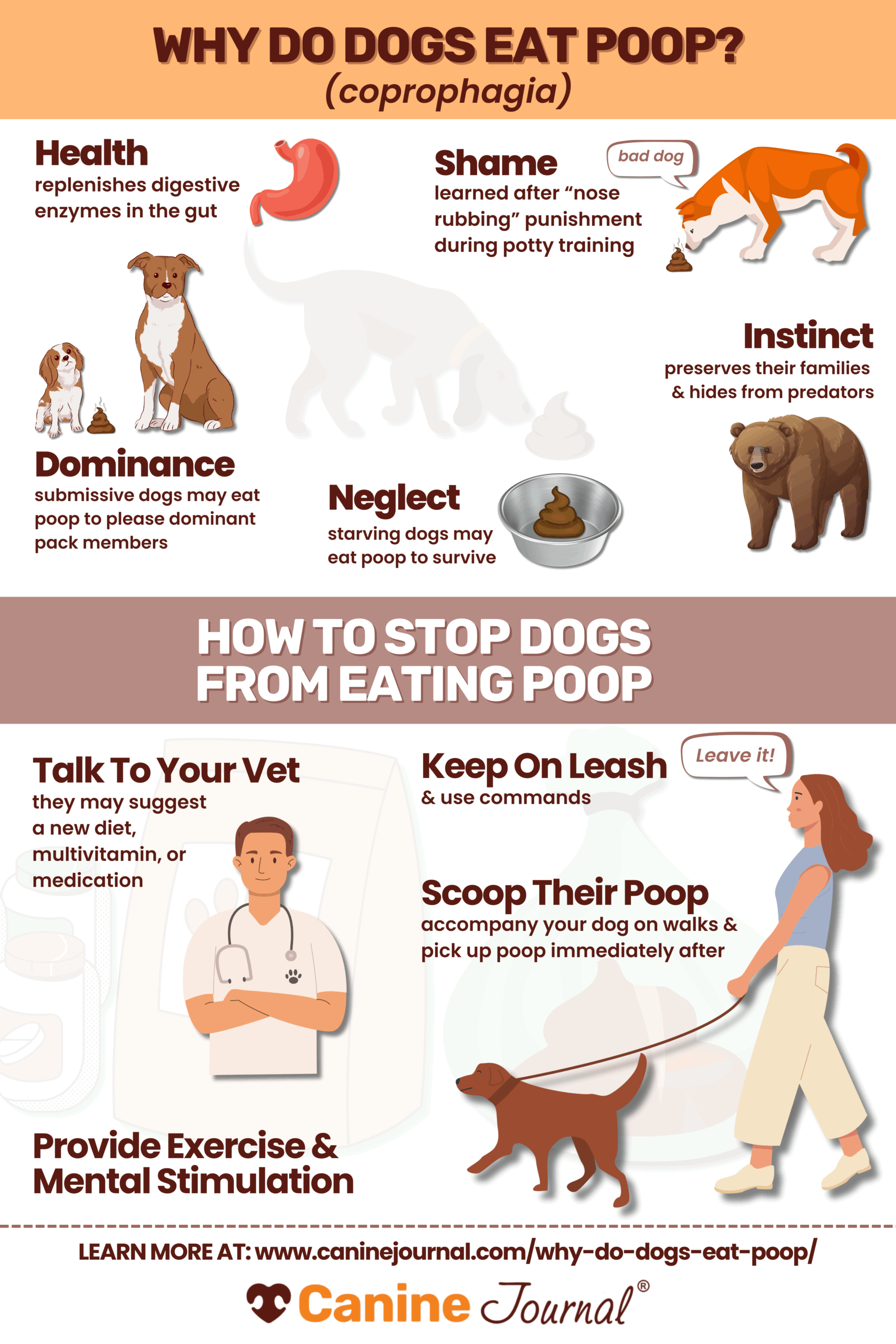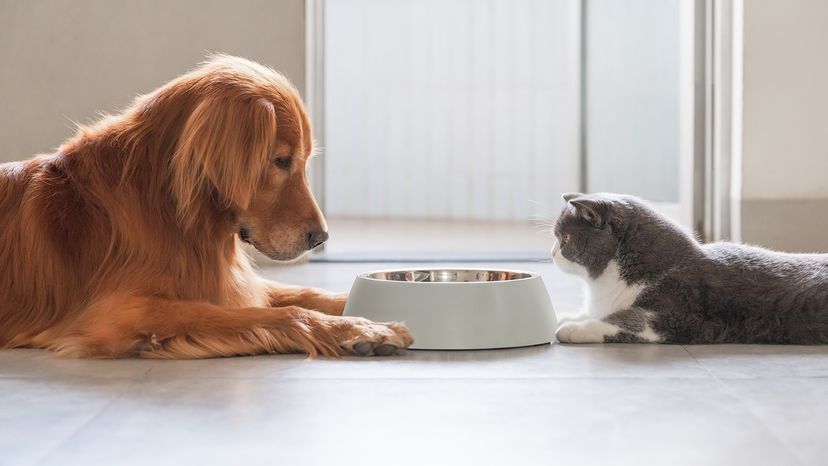Have you ever caught your dog sniffing around the cat’s litter box and wondered, “What happens if my dog eats cat litter?” It’s a common concern for many pet owners, and the answer might surprise you. Your dog’s curiosity can sometimes lead to unexpected trouble, and understanding the risks is key to keeping your furry friend safe.
You’ll discover why eating cat litter can be harmful, what signs to watch for, and what steps you should take if it happens. Keep reading to protect your dog and avoid a scary trip to the vet.
Why Dogs Eat Cat Litter
Dogs sometimes eat cat litter for different reasons. Understanding these reasons helps prevent this risky behavior. Dogs use their mouths to explore the world around them. This habit leads them to try unusual items like cat litter.
Curiosity And Exploration
Dogs are naturally curious animals. They sniff and taste new things to learn about their environment. Cat litter looks and feels different from regular dog food or toys. This attracts their attention and makes them want to try it. Puppies and young dogs especially explore by eating strange objects.
Attraction To Scent And Texture
Cat litter often holds strong smells from cats’ waste. Dogs may find these scents interesting or appealing. Some types of litter have soft, grainy textures that feel unusual in the mouth. This combination can tempt dogs to eat the litter instead of avoiding it.
Nutritional Deficiencies
Sometimes dogs eat cat litter due to missing nutrients in their diet. They might seek out minerals or other substances found in litter materials. This behavior signals a need to improve the dog’s food quality. A balanced diet reduces the chance of dogs eating harmful items like cat litter.

Credit: k9connoisseur.com
Types Of Cat Litter And Their Risks
Cat litter comes in different types. Each type has unique ingredients and risks if a dog eats it. Understanding these risks helps keep pets safe.
Clumping Clay Litter
Clumping clay litter is common in many homes. It contains bentonite clay that forms clumps when wet. If a dog swallows it, the litter can expand in the stomach. This may cause blockages or digestive issues. The dust from clay litter can also irritate a dog’s lungs or eyes.
Silica Gel Crystals
Silica gel litter looks like small crystals. It absorbs moisture well and controls odor. These crystals are not toxic but can cause dehydration if eaten in large amounts. They do not clump, so they can pass through the digestive system. Still, eating too much can lead to stomach upset or blockage.
Natural And Biodegradable Litters
Natural litters use materials like corn, wheat, or pine. They are less dusty and often safer for pets. However, some ingredients may cause allergies or stomach upset in dogs. If ingested, natural litters might swell and cause mild blockages. The risk is lower compared to clay or silica litters but still present.
Health Risks For Dogs
When your dog eats cat litter, the risks go beyond just a messy cleanup. Understanding the health dangers your pet faces can help you act quickly and protect their well-being. Let’s break down the main health risks that occur when dogs ingest cat litter.
Gastrointestinal Blockages
Cat litter can clump and harden inside your dog’s stomach or intestines, causing serious blockages. This can lead to severe pain, vomiting, and a loss of appetite. If your dog shows signs of distress, such as abdominal swelling or difficulty passing stool, you need to seek veterinary care immediately.
Toxicity And Chemical Exposure
Many cat litters contain chemicals or additives like clumping agents, fragrances, and deodorants that are harmful if swallowed. These substances can irritate your dog’s digestive tract or cause poisoning. Always check the ingredients of your cat’s litter, especially if your dog has a history of eating unusual things.
Bacterial And Parasitic Infections
Used cat litter can harbor bacteria and parasites from cat waste, which can infect your dog. Parasites like Toxoplasma gondii, responsible for toxoplasmosis, can be passed through contaminated litter. This risk is higher if your dog has a weakened immune system, so keeping your dog away from used litter is crucial.

Credit: www.goodnavet.com.au
Symptoms To Watch For
Dogs eating cat litter can face health risks. Recognizing symptoms early helps prevent serious problems. Watch for changes in your dog’s behavior and physical condition. Some signs show mild irritation, while others may indicate a blockage or poisoning. Knowing these symptoms guides you to get timely help.
Vomiting And Diarrhea
Vomiting is a common reaction to swallowing cat litter. It may happen soon after ingestion. Diarrhea often follows, causing dehydration risks. Both symptoms show the digestive system is upset. Keep an eye on how often these occur and their severity.
Lethargy And Loss Of Appetite
A tired or weak dog may have trouble eating. Lethargy signals discomfort or illness. Loss of appetite can lead to weakness and slow recovery. These signs suggest the dog’s body is stressed. Prompt attention is necessary to avoid worsening conditions.
Abdominal Pain And Bloating
Abdominal pain makes a dog restless or whiny. Bloating means the stomach looks swollen or hard. These signs can mean a blockage from the litter. Blockages are serious and may need emergency care. Check your dog’s belly often after litter ingestion.
Immediate Steps To Take
If your dog has eaten cat litter, acting quickly can make a big difference. Immediate steps help prevent serious health issues and ensure your pet’s safety. Here’s what you should focus on right away to manage the situation effectively.
Preventing Further Ingestion
First, remove the cat litter box from your dog’s reach to stop any more consumption. Dogs are curious and may return to the litter if it remains accessible. You can also distract your dog with toys or treats to shift their attention away from the litter.
Consider setting up a dedicated area for your cat’s litter box that your dog cannot access. This simple change can prevent future incidents and reduce stress for both pets.
Contacting A Veterinarian
Reach out to your veterinarian immediately after discovering your dog has eaten cat litter. Be ready to provide details like the type and amount of litter ingested, and your dog’s size and breed. This information helps the vet assess the risk and recommend appropriate action.
In some cases, the vet might ask you to bring your dog in for an examination or advise monitoring at home. Don’t hesitate to call, even if your dog seems fine, as some symptoms take time to show.
Monitoring Your Dog’s Condition
Keep a close eye on your dog for signs of distress such as vomiting, diarrhea, lethargy, or difficulty breathing. These could indicate a blockage or poisoning requiring urgent care. Note any changes in behavior or appetite and report them to your vet promptly.
Make a checklist of symptoms to watch for during the next 24 to 48 hours. This helps you stay alert and ensures you don’t miss subtle warning signs that could escalate quickly.
Veterinary Treatments
When a dog swallows cat litter, veterinary care is crucial. The treatments depend on the type of litter and the amount ingested. A vet will assess the dog’s condition and decide the best way to help. Early intervention can prevent serious health problems.
Inducing Vomiting
Vets may induce vomiting to remove the litter from the stomach. This is done carefully to avoid harming the dog. Vomiting is usually done soon after ingestion. It helps clear the stomach before the litter causes blockages or irritation.
Hydration And Supportive Care
Hydration is key after litter ingestion. Vets provide fluids to prevent dehydration and support kidney function. Supportive care can include medications to reduce nausea and protect the stomach lining. Monitoring the dog’s vital signs ensures they stay stable.
Surgical Intervention
Surgery may be necessary if the litter causes a blockage. The vet will remove the obstruction from the intestines. This is a serious procedure but can save the dog’s life. Quick action reduces the risk of complications like tissue damage or infection.
Preventing Future Incidents
Preventing your dog from eating cat litter is crucial for their health and your peace of mind. It’s not just about fixing the behavior but creating an environment where your dog has no reason to be curious about the litter in the first place. Small changes in placement, the type of litter you use, and your dog’s daily routine can make a big difference.
Safe Litter Box Placement
Choosing the right spot for the litter box can stop your dog from getting too close. Place it in a room or area your dog can’t easily access, such as behind a baby gate or in a room with a door you can close.
Think about where your dog spends most of their time. If you keep the litter box in a quiet, low-traffic spot, your dog is less likely to be curious about it.
Using Pet-safe Litters
Not all cat litters are created equal, especially when you have a dog in the house. Some litters are made from non-toxic, biodegradable materials like corn, wheat, or paper, which are safer if accidentally ingested.
Switching to these safer options can reduce the risk if your dog does sneak a taste. Have you tried litters that are labeled “pet-safe” or “natural”? They often come with less dust and harmful chemicals, making your home safer for both pets.
Training And Environmental Enrichment
Dogs often eat unusual things out of boredom or curiosity. Keeping your dog mentally and physically stimulated can prevent this behavior.
Try adding puzzle toys, extra walks, or training sessions to your dog’s daily routine. When your dog’s mind is busy, they’re less likely to explore the litter box as a snack spot.
Have you noticed your dog tends to get into trouble when left alone? Setting up a play area or safe chew toys can redirect their attention and reduce unwanted behaviors.

Credit: www.caninejournal.com
Frequently Asked Questions
What Are The Risks If A Dog Eats Cat Litter?
Eating cat litter can cause choking, intestinal blockage, or poisoning. Clumping litter may harden in the stomach, causing severe issues. Prompt veterinary care is crucial to prevent complications and ensure your dog’s safety.
Can Cat Litter Poison My Dog?
Some cat litters contain harmful chemicals or clumping agents that can be toxic if ingested. Symptoms include vomiting, diarrhea, or lethargy. Always check litter ingredients and consult a vet immediately if your dog eats cat litter.
How Can I Prevent My Dog From Eating Cat Litter?
Keep litter boxes in areas inaccessible to dogs. Use covered litter boxes or place them in separate rooms. Training and providing enough chew toys can reduce curiosity and prevent ingestion of litter.
What Should I Do If My Dog Eats Cat Litter?
Monitor your dog closely for signs of distress like vomiting or lethargy. Contact your veterinarian immediately for advice and possible treatment. Early intervention can prevent serious health problems.
Conclusion
Dog eating cat litter can cause health concerns. Monitor your pet closely. Symptoms may include vomiting or diarrhea. Contact your vet if symptoms persist. Prevention is key. Keep litter boxes out of reach. Train your dog to avoid litter. Consider using covered litter boxes.
Choose pet-safe litter options. Regular vet check-ups help maintain health. Keeping pets safe requires vigilance. Your pet’s well-being matters. Stay informed and proactive. Always prioritize their safety.

